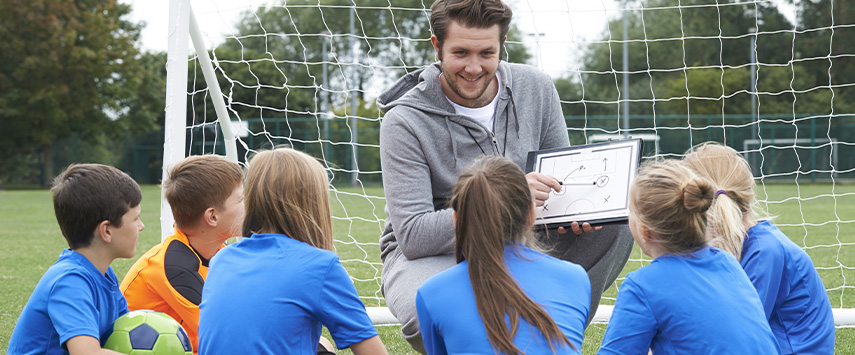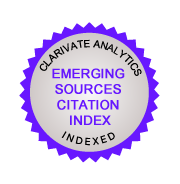Boredom or Fun? Impact of Perception of Physical Education Class on Leisure-Time Physical Activity in Mexican Children
DOI:
https://doi.org/10.7160/eriesj.2025.180105Keywords:
Physical Education, Enjoyment, School Age, Boredom, RelevanceAbstract
The aim is to determine the predictive effect of Satisfaction/Fun, boredom, the importance of Physical Education (PE) classes, and intention to engage in leisure-time physical activity (LTPA) on the level of physical activity (PA) in primary school children. This is a cross-sectional causal study. A total of 519 children from the states of Jalisco and Nuevo León participated, with an average age of 10.50 ± 0.94 years. Inclusion criteria included signed informed consent; children with any pathology were excluded. The analysis included descriptive statistics and multiple linear relationships. The results showed high levels (M > 4) of Satisfaction/Fun, importance and usefulness of PE classes, and intention to practice LTPA; moderate to low levels of PA and boredom. Significant differences (p = .001) were found in PA levels by gender and state and in the importance of PE classes by gender. Fun/Satisfaction and intention to engage in LTPA were the best predictors of PA with values of B = .25; B = .19; F (2,516); (p = .001); R2 = .15. PE classes should include strategies that promote student satisfaction and fun and reintegrate the learning unit into the current curriculum framework.
References
Alvarez-Pitti, J., Casajús Mallén, J. A., Leis Trabazo, R., Lucía, A., López de Lara, D., Moreno Aznar, L. A. and Rodríguez Martínez, G. (2020) ‘Ejercicio físico como «medicina» en enfermedades crónicas durante la infancia y la adolescencia’, Anales de Pediatría, Vol. 92, No. 3, pp. 173.e1–173.e8. https://doi.org/10.1016/j.anpedi.2020.01.010
American Academy of Pediatrics (2020) La American Academy of Pediatrics urge a que se prescriba la actividad física durante las consultas médicas, [Online], Available: https://www.healthychildren.org/Spanish/news/Paginas/Physical-Activity-Assessment-and-Counseling-.aspx#:~:text=Los%20adolescentes%20necesitan%2060%20minutos,la%20competencia%2C%20cuando%20sea%20apropiado [27 Mar 2025]
Arévalo, D.F., Feu, S. and De la Cruz Sánchez, E. (2020) ‘Diferencias entre el medio rural y urbano en el nivel de actividad física en la transición de la educación primaria a la educación secundaria’, Revista Española Salud Pública, 94, p. e202005026. https://ojs.sanidad.gob.es/index.php/resp/article/view/834
Aznar-Ballesta, A. and Vernetta, M. (2022) ‘Satisfacción e importancia de la Educación Física en centros educativos de secundaria’, Revista Iberoamericana de Ciencias de la Actividad Física y el Deporte, Vol. 11, No. 2, pp. 44–57. https://doi.org/10.24310/riccafd.2022.v11i2.15009
Baños, R., Marentes-Castillo, M., Zamarripa, J., Baena-Extremera, A., Ortiz-Camacho, M. del M. and Duarte-Félix, H. (2019) ‘Influencia de la satisfacción, aburrimiento e importancia de la educación física extraescolar en adolescentes mexicanos’, Cuadernos de Psicología del Deporte, Vol. 19, No. 3, pp. 205–215. https://doi.org/10.6018/cpd.358461
Baños, R. Machado-Parra, J. P., Arrayales-Millán, E. and Baena-Extremera, A. (2022) ‘Psychometric properties of the learning perception questionnaire in Mexican students’, Scientific Reports, Vol. 12, No. 1, p. 22516. https://doi.org/10.1038/s41598-022-25912-w
Chu, T.L. (Alan), Zhang, T., Zhang, X., Thomas, K. T. and Gu, X. (2020) ‘School environments predict Hispanic children’s physical education-related outcomes through basic psychological need satisfaction’, Learning and Individual Differences, Vol. 80, p. 101844. https://doi.org/10.1016/j.lindif.2020.101844
Delgado Floody, P. A., Reyes, D., Martínez Salazar, C. and García-Pinillos, F. (2019) ‘Health-related quality of life, psychosocial variables, and academic performance in school-age girls who practice dancing. A comparative study’, Nutricion Hospitalaria, Vol. 36, No. 6, pp. 1368–1374. https://doi.org/10.20960/nh.02639
Diario Oficial de la Federación (2014) Reglamento de la ley general de salud en materia de investigación para la salud, [Online], Available: http://www.ordenjuridico.gob.mx/Publicaciones/pdf/R93.pdf
Fin, G., Baretta, E., Moreno Murcia, J. A. and Nodari Júnior, R. J. (2017) ‘Interpersonal styles, motivation and satisfaction in physical education classes and physical activity level in adolescents’, Universitas Psychologica, Vol. 16, No. 4, p. 1.https://doi.org/10.11144/Javeriana.upsy16-4.asms
González Rivas, R., Laguna Celia, A. and Nuñez Enriquez, O. (2023) ‘Factors that influence in Physical Education in Mexico’, Retos, Vol. 48, pp. 349–357. https://doi.org/10.47197/retos.v48.96752
Granero-Gallegos, A., Baena-Extremera, A., Pérez-Quero, F. J., Ortiz-Camacho, M. del M. y Bracho-Amador, C. (2014) ‘Validación española del «intention to partake in leisure-time physical activity (Spanish validation of the scale intention to leisure-time in partake physical aktivity)’, Retos, 26, pp. 40–45. http://dx.doi.org/10.47197/retos.v0i26.34392
Herazo-Beltrán, A.Y. and Domínguez-Anaya, Regina. (2012) ‘The reliability of a questionnaire regarding Colombian children’s physical activity’, Revista de Salud Pública, Vol. 14, No. 5, pp. 802–809.
Hernández-Sampieri, Roberto. and Mendoza, Christian. (2018) Metodología de la investigación: Las rutas cuantitativa, cualitativa y mixta. México: McGrawHill.
Institute of Medicine (2013) Educating the student body: taking physical activity and physical education to school. Ed. by Comité de Física Actividad y Educación Física en el Ámbito Escolar; Comida y Junta de Nutrición; Instituto de Medicina.
Kowalski, K. C., Crocker, P. R. and Donen, R. M. (2004) The Physical Activity Questionnaire for Older Children (PAQ-C) and Adolescents (PAQ-A) Manual, Saskatoon: College of Kinesiology, University of Saskatchewan.
Kowalski, K.C., Crocker, P.R.E. and Faulkner, R.A. (1997) ‘Validation of the Physical Activity Questionnaire for Older Children’, Pediatric Exercise Science, Vol. 9, No. 2, pp. 174–186. https://doi.org/10.1123/pes.9.2.174
Manchola-González, J., Bagur-Calafat, C. and Girabent-Farrés, M. (2017) ‘Fiabilidad de la versión española del Cuestionario de actividad física PAQ-C / Reliability of the Spanish Version of Questionnaire of Physical Activity PAQ-C’, Revista Internacional de Medicina y Ciencias de la Actividad Física y del Deporte, 17(65), pp. 139-152. http://dx.doi.org/10.15366/rimcafd2017.65.008
Martín-Bello, C., Vicente-Rodríguez, G., Casajús, J. A. and Gómez-Bruton, A. (2020) ‘Validación de los cuestionarios PAQ-C e IPAQ-A en niños/as en edad escolar. [Validation of the PAQ-C and IPAQ-A questionnaires in school children]’, Cultura, Ciencia y Deporte, 15(44), pp. 177–187. https://doi.org/10.12800/ccd.v15i44.1460
Martínez- Hernández, R., Núñez Rocha, G.M. and Zamarripa, J. (2024) ‘Nivel de Actividad Física y Calidad de Vida Relacionada con la Salud en Niños de Edad Escolar. Una prueba piloto’, Políticas Sociales Sectoriales, 1(2), pp. 319–336.
Martínez- Hernández, R. and Zamarripa, J. (2023) ‘Actualidades en educación física y deporte 2023’, in Universidad de Guadalajara (ed.). Actualidades en educación física y deporte 2023 (pp. 85–105). Universidad de Guadalajara.
Medina, C., Jáuregui, A., Hernández, C., González, C., G Olvera, A., Blas, N., Campos, I. and Barquera, S. (2023) ‘Prevalencia de comportamientos del movimiento en población mexicana’, Salud Pública de México, Vol. 65, pp. s259–s267. https://doi.org/10.21149/14754
Moon, J. and Park, Y. (2022) ‘Exploring South Korean Elementary School Classroom Teachers’ Beliefs and Practices in Physical Education’, International Journal of Environmental Research and Public Health, Vol. 19, No. 22, p. 15033. https://doi.org/10.3390/ijerph192215033
Muñoz, V., Gómez-López, M. and Granero-Gallegos, A. (2019) ‘Relación entre la satisfacción con las clases de Educación Física, su importancia y utilidad y la intención de práctica del alumnado de Educación Secundaria Obligatoria’, Revista Complutense de Educación, Vol. 30, No. 2, pp. 479–491. https://doi.org/10.5209/RCED.57678
Muñoz-Miralles, R., Ortega-González, R., López-Morón, M. R., Batalla-Martínez, C., Manresa, J. M., Montellà-Jordana, N., Chamarro, A., Carbonell, X. and Torán-Monserrat, P. (2016) ‘The problematic use of Information and Communication Technologies (ICT) in adolescents by the cross sectional JOITIC study’, BMC Pediatrics, Vol. 16, No. 1, p. 140. https://doi.org/10.1186/s12887-016-0674-y
Paramio-Pérez, G. (2017) ‘Beneficios psicológicos de la actividad física y el deporte’, Revista de Educación, Motricidad e Investigación, Vol. 7, p. 1. https://doi.org/10.33776/remo.v0i7.3133
Ramírez-Granizo, I. A., Zurita Ortega, F., Sánchez-Zafra, M. and Chacón Cuberos, R. (2019) ‘Análisis del clima motivacional hacia el deporte y el uso problemático de videojuegos en escolares de Granada Analysis of the motivational climate towards sport and the problematic use of video games in schoolchildren in Granada’, Retos, Vol. 35, pp. 255–260. https://doi.org/10.47197/retos.v0i35.62584
Delgado Floody, P. A., Reyes, D., Martínez Salazar, C. and García-Pinillos, F. (2019) ‘Health-related quality of life, psychosocial variables, and academic performance in school-age girls who practice dancing. A comparative study’, Nutricion Hospitalaria, Vol. 36, No. 6, pp. 1368–1374. https://doi.org/10.20960/nh.02639
Rojo-Ramos, J., González-Becerra, M. J., Gómez-Paniagua, S. and Adsuar, J. C. (2022) ‘Satisfaction with Physical Activity among Students in the Last Cycle of Primary Education in Extremadura’, International Journal of Environmental Research and Public Health, Vol. 19, No. 11, p. 6702. https://doi.org/10.3390/ijerph19116702
Secretaría de educación pública (2015) Primaria. Educación Básica, [Online], Available: https://www.gob.mx/sep/acciones-y-programas/primaria-educacion-basica.
SEP (2011a) Programas de estudio 2011/Programa de Educación Física /Guía para el maestro de primaria, [Online], Available: https://www.gob.mx/cms/uploads/attachment/file/16015/Programa_Primer_grado_-_Educacion_Fisica.pdf.
SEP (2011b) Sexto grado - Educación Física, [Online], Available: https://www.gob.mx/sep/acciones-y-programas/sexto-grado-educacion-fisica?state=published.
SEP (2022) Principales cifras del sistema educativo nacional 2018-2019, [Online].
SEP (2024) Programa de estudio para la educación primaria: Programa sintético, México, pp. 1–88.
Tremblay, M. S., Gray, C. E., Akinroye, K., Harrington, D. M., Katzmarzyk, P. T., Lambert, E. V., Liukkonen, J., Maddison, R., Ocansey, R. T., Onywera, V. O., Prista, A., Reilly, J. J., Martínez, M. del P. R., Duenas, O. L. S., Standage, M. and Tomkinson, G. (2014) ‘Physical Activity of Children: A Global Matrix of Grades Comparing 15 Countries’, Journal of Physical Activity and Health, Vol. 11, No. s1, pp. S113–S125. https://doi.org/10.1123/jpah.2014-0177
UNESCO (2015) Carta Internacional de la Educación física, la actividad física y el deporte. SHS/2015/PI/H/14 REV. 9, [Online], Available: https://unesdoc.unesco.org/ark:/48223/pf0000235356 [28 Mar 2025]
Vidarte, C.A.J., Alvarez, C.V., Cuellar, C.S and Alfonso-Mora, M.L. (2011) ‘Actividad física: estrategia de promoción de la salud’, Hacia la Promoción de la Salud, Vol. 16, No. 1, pp. 202–218.
World Health Organization (2020) Directrices de la OMS sobre actividad física y hábitos sedentarios: de un vistazo [WHO guidelines on physical activity and sedentary behaviour: at a glance]: Ginebra.
World Health Organization (2021) Physical activity, Physical activity, [Online], Available: https://www.who.int/news-room/fact-sheets/detail/physical-activity [7 Mar 2023]
World Medical Association (2017) Declaración de Helsinki de la AMM-principios éticos para las investigaciones médicas en seres humanos, [Online], Available: https://www.wma.net/es/policies-post/declaracion-de-helsinki-de-la-amm-principios-eticos-para-las-investigaciones-medicas-en-seres-humanos/
Zueck, E. M. D. C., Ramírez García, A. A., Rodríguez Villalobos, J. M. and Irigoyen Gutiérrez, H. E. (2020) ‘Satisfacción en las clases de Educación Física y la intencionalidad de ser activo en niños del nivel de primaria’, Retos, Vol. 37, pp. 33–40. https://doi.org/10.47197/retos.v37i37.69027
Additional Files
Published
How to Cite
Issue
Section
License
Copyright (c) 2025 Jorge Zamarripa, MSP. Rocío Martínez-Hernández , Dra. en Med. Georgina Mayela Núñez Rocha

This work is licensed under a Creative Commons Attribution 4.0 International License.
Authors declare with this manuscript intended for publication to ERIES Journal that:
- all co-authors agree with the publication of the manuscript even after amendments arising from peer review;
- all co-authors agree with the posting of the full text of this work on the web page of ERIES Journal and to the inclusion of references in databases accessible on the internet;
- no results of other researchers were used in the submitted manuscript without their consent, proper citation, or acknowledgement of their cooperation or material provided;
- the results (or any part of them) used in the manuscript have not been sent for publication to any other journal nor have they already been published (or if so, that the relevant works are cited in this manuscript);
- submission of the manuscript for publication was completed in accordance with the publishing regulations pertaining to place of work;
- experiments performed comply with current laws and written consent of the Scientific Ethics Committee / National Animal Care Authority (as is mentioned in the manuscript submitted);
- grant holders confirm that they have been informed of the submitted manuscript and they agree to its publication.
Authors retain copyright and grant ERIES Journal right of first publication with the work simultaneously licensed under a Creative Commons Attribution License that allows others to share the published work with an acknowledgement of its initial publication in ERIES Journal. Moreover, authors are able to post the published work in an institutional repository with an acknowledgement of its initial publication in ERIES Journal. In addition, authors are permitted and encouraged to post the published work online (e.g. institutional repositories or on their website) as it can lead to productive exchanges, as well as earlier and greater citation of published work.






